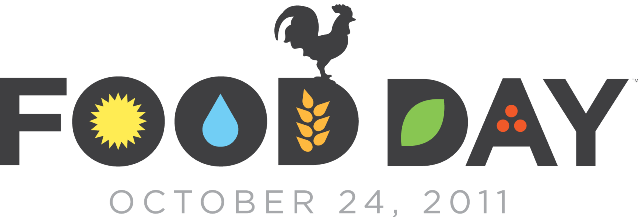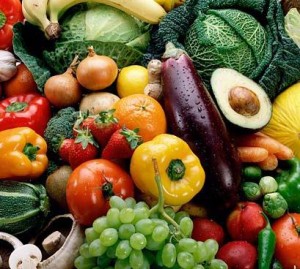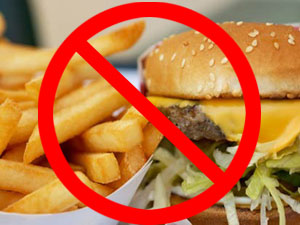 If you’re wondering if Food Day is October 16 or October 24, you’re not alone.
If you’re wondering if Food Day is October 16 or October 24, you’re not alone.
October 16, 2011 is World Food Day, which the Food and Agriculture Organization of the United Nations celebrates each year on October 16, the day on which the Organization was founded in 1945. And October 24, 2011 is Food Day that focuses on the United States. When it comes to eating right, there are never enough days to bring attention to the cause so the more the merrier. In the end, what we put in our body can result in how it treats us when battling maladies such as cancer.
Of course there are instances when the healthiest people in the world are victimized by cancer but sometimes how well they have taken care of their bodies up to that point helps determine their fate. The earlier we can teach children the importance of eating well and proper nutrition, the better. And that’s why we should recognize Food Day.
Food Day seeks to bring together Americans from all walks of life—parents, teachers, and students; health professionals, community organizers, and local officials; chefs, school lunch providers, and eaters of all stripes—to push for healthy, affordable food produced in a sustainable, humane way. It works with people around the country to create thousands of events in homes, schools, churches, farmers markets, city halls, and state capitals. Senator Tom Harkin (D-IA) and Representative Rosa DeLauro (D-CT) are the Honorary Co-Chairs for Food Day 2011, and the day is sponsored by the Center for Science in the Public Interest, the nonprofit watchdog group that has led successful fights for food labeling, better nutrition, and safer food since 1971.
• Reduce diet-related disease by promoting safe, healthy foods
• Support sustainable farms & limit subsidies to big agribusiness
• Expand access to food and alleviate hunger
• Protect the environment & animals by reforming factory farms
• Promote health by curbing junk-food marketing to kids
• Support fair conditions for food and farm workers
According to the Food Day website:
The foods we enjoy should promote, not undermine, our good health. Most Americans feast on salty, overly processed packaged foods; high-calorie sugary drinks that pack on pounds and rot teeth; and fast-food meals made of white bread, fatty factory-farmed meat, French fries, and more soda still. Such junky diets promote obesity and tooth decay, as well as diabetes, heart attacks, strokes, and cancer. As many as several hundred thousand Americans die prematurely every year due to what we eat, with medical costs running well over $100 billion.
Some facts:
• Two-thirds of American adults and one-third of children are overweight or obese.
A healthy diet can lower blood pressure, cholesterol levels, blood sugar, and prevent everything from tooth decay and obesity to heart disease, stroke, diabetes, and cancer.
• Americans now spend well over $30 billion a year just on drugs to treat heart disease and high blood pressure. Heart surgery costs another $25 billion.
• Cutting sodium (mostly from salt) consumption in half could save upwards of 100,000 lives per year.
• Eating a diet rich in fruits, vegetables, and whole grains, and very low in saturated fat and cholesterol, can be highly effective in treating heart disease.
 It’s time to eat real! As health experts now recognize, the best diets consist largely of vegetables, fruit, beans, and whole grains, along with some seafood, low-fat dairy products, and poultry. That kind of diet has lots of fiber, vitamins, and minerals, but little sodium and saturated and trans fats. Whether the cuisine is classic Mediterranean, Asian, vegetarian, or American, healthy diets could lead to longer, healthier, happier lives for almost everyone.
It’s time to eat real! As health experts now recognize, the best diets consist largely of vegetables, fruit, beans, and whole grains, along with some seafood, low-fat dairy products, and poultry. That kind of diet has lots of fiber, vitamins, and minerals, but little sodium and saturated and trans fats. Whether the cuisine is classic Mediterranean, Asian, vegetarian, or American, healthy diets could lead to longer, healthier, happier lives for almost everyone.
Moreover, diet can even be an extremely effective and delicious way to treat diabetes, high blood pressure, and heart disease. Indeed, a low-fat, almost-vegetarian diet can actually reverse heart disease, stripping away the gunk that injures arteries, and treat type 2 diabetes. Also, consuming less sodium (mostly from salt) and more fruits and vegetables helps keep blood vessels supple and blood pressure down. Surely, a really healthful diet—from salads to low-sodium lentil soup to whole wheat pasta primavera—is far more enjoyable and cheaper than undergoing surgery to have an artery reamed out or replaced.
Ordinary sugar and high-fructose corn syrup make up one-sixth of the average American’s calorie intake. Half of all added sugars come to us in the form of “liquid candy”: soft drinks, fruit drinks, sports drinks, and iced teas. And it is those sugary drinks that pose the biggest risk of weight gain, because they don’t seem to curb appetite as much as do solid foods. In fact, the one food or beverage that has been demonstrated to promote weight gain is non-diet soft drinks.
Each of us needs to make an effort to choose a healthy diet, even though that might mean changing life-long eating habits. Many of today’s adults grew up watching junk-food commercials and eating fatty, salty meals at fast-food restaurants. Back then, few people were talking about good nutrition. In the process, many people did not learn how to cook, other than putting a box into the microwave oven. Now, the medical community, the federal government, and even large parts of the food industry agree that we’ve got to go down a different road. While changing our eating habits may be momentarily jarring, a smaller waistline, healthier arteries, and greater vitality are worth the effort.
 So it’s time to cut out (or down on) the junk and replace it with the good stuff:
So it’s time to cut out (or down on) the junk and replace it with the good stuff:
• Plan snacks and meals around fruits, vegetables, whole grains, low-fat milk and yogurt, fish, and lean poultry. Use one of those cookbooks on your shelf to try out a new, healthy recipe. If you fill up on the good stuff, you won’t be tempted so much by the bad.
• At the grocery store, switch from whole or 2% milk to 1% or fat-free, and switch from white bread and white rice to whole wheat bread and brown rice. Tap water, seltzer water, flavored unsweetened water, and even diet sodas are better for you than sugary soft drinks. Use Nutrition Facts labels to help you choose healthier packaged-food products—but you’d be best off skipping whole aisles of the supermarket.
• At restaurants, don’t be tempted by the huge portions. Share an entrée with a friend, ask the server to wrap up half for lunch tomorrow, skip dessert…or eat at home! Thanks to new laws, calorie labeling has come to fast food and other chain restaurants in some locales and will be going nationwide in 2012—that should be a big help when choosing what to order.
And, don’t forget to exercise, starting with pushing away the plate when you’re full!
While we can choose healthier diets on our own, doing so would be a lot easier if we got more help from government health agencies and companies. The Federal Trade Commission should be stopping deceptive advertisements, and the Food and Drug Administration should be stopping deceptive labels. The FDA should also require simplified nutrition information on the fronts of food packages, limit sodium in packaged foods, and get artificial trans fat—gram for gram, the most harmful kind of fat—totally out of food.
Some food manufacturers are, if only hesitantly, getting on the nutrition bandwagon. Campbell, Frito-Lay, General Mills, and other companies are getting rid of trans fat and lowering sodium. Whole grains are getting a bit easier to find in the bread, pasta, and rice aisles. But there’s a long way to go, and a lot of the less-harmful processed foods still are made with dyes, white flour, and plenty of sugar.
Every employer should make sure that the foods in the cafeteria and vending machines are healthy. A few employers, such as the huge Cleveland Clinic, are removing sodas and other junk foods from their vending machines and cafeterias, posting calorie information in cafeterias, and providing space for a weekly farmers market. Health insurance companies should encourage doctors to inform heart patients that a healthy diet and more exercise are often the smartest way to treat heart disease. And health departments at all levels of government should mount community-wide campaigns aimed at reducing consumption of soft drinks, meat, and cheese; increasing consumption of fresh fruits and vegetables; and consuming fewer salty foods.
SEP






